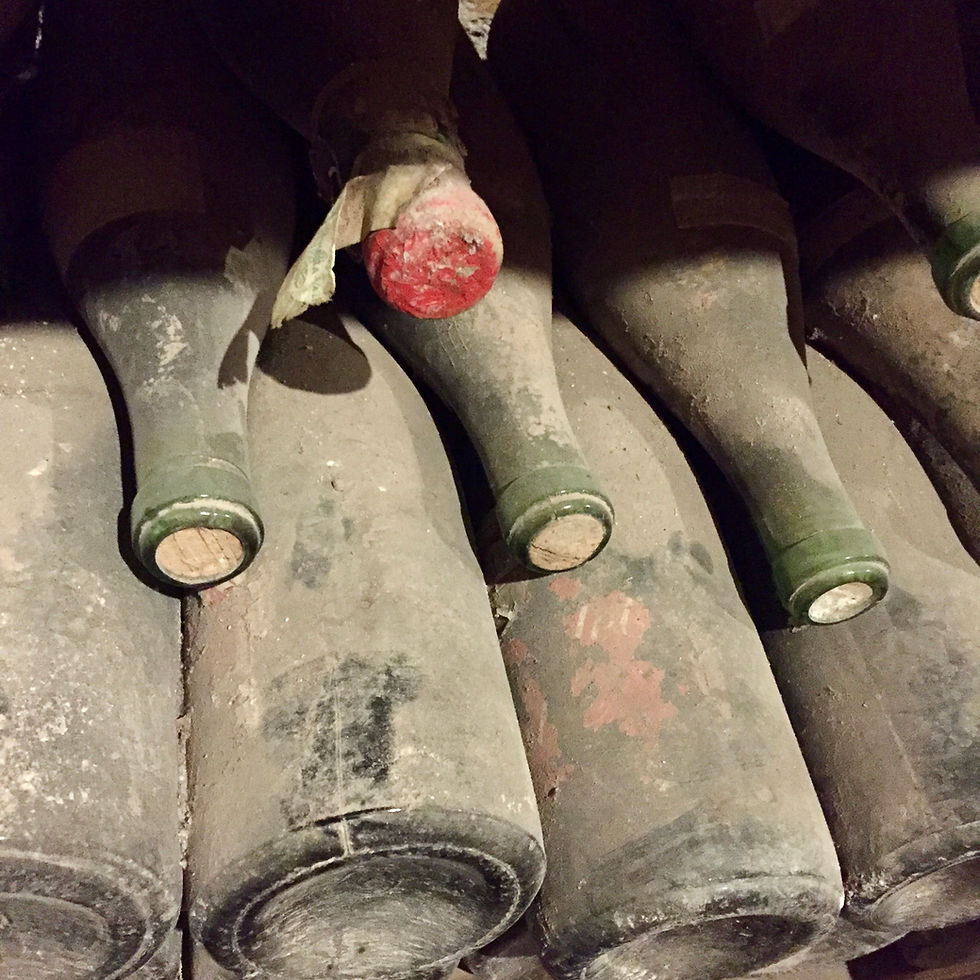So Much More than a Pretty Bottle: Perrier-Jouët Belle Epoque 2013
- Joanna Simon

- Nov 22, 2022
- 4 min read

The seminal Belle Epoque bottle decorated with the Japanese anemone motif designed for Perrier-Jouët by Émile Gallé, one of the pioneers of Art Nouveau, in 1902
The text of this article was first published in The World of Fine Wine issue 72 (2021).
Could being famous for having Champagne’s most eye-catchingly pretty and memorable bottle sometimes be a double-edged sword? Do some wine professionals, critics and collectors take it less seriously as a result – less seriously than it deserves?
I began to speculate as I thought how much less frequently Perrier-Jouët’s Belle Epoque – the liquid, as distinct from the bottle – seems to be written about than other famous prestige cuvées. Doubtless there is relatively more coverage of Perrier-Jouët within Japan, the leading market for Belle Epoque, and within the US, the largest for Perrier-Jouët as a whole, but I have the impression that Belle Epoque doesn’t always receive due recognition as one of the great Champagnes.
If true, is the iconic Art Nouveau bottle the only reason? Perhaps it is compounded by the style of the Champagne: its unashamed charm and accessibility and its emphasis on floral notes and fruit in an era when salinity and bitterness have become increasingly valued, when some renowned cuvées are admired for their incisive minerality, acidity and youthful austerity, and others are revered for their magisterial power.
Perhaps an overt apéritif-style is also at risk of being underestimated in an era when chefs de caves work increasingly closely with chefs to create perfect dishes for individual cuvées. It’s not that Belle-Epoque is unsuited to the table, but it is first and foremost an apéritif and I wouldn’t advise anyone keen to drink it with lunch or dinner to venture much beyond simply prepared Dover or lemon sole or turbot.
"It is rightly regarded as a Chardonnay-dominant style, but mathematically Chardonnay is only half the story"
Back to the 2013. From the outset, it was a Champagne vintage at risk of being overshadowed by its predecessor. Although 2012 harvest wasn’t greeted with universal acclaim after one of the most turbulent growing seasons on record, it was clear as soon as the vins clairs began to be tasted that it was a vintage of outstanding, perhaps exceptional quality.
The 2013 growing season wasn’t as difficult, but it had its challenges. Winter was cold, spring was cool and rainy, and flowering, in early July, was more than two weeks later than average. July continued generally hot, dry and sunny, but was punctuated by several violent thunderstorms. August was sunny but cooler than average.
September temperatures were not high, and there was some rain, leading to a few incidences of rot in Pinot Noir, but overall it was a month of classically sunny days and cool nights – an old-fashioned September during which grapes slowly ripened to full maturity and were eventually harvested in October. Perrier-Jouët started on 30 September, gathering grapes for Belle Epoque “with a good balance of alcohol and acidity”.

Chef de cave Sévérine Frerson says the dosage of the 2013 Perrier-Jouët Belle Epoque 2013 was "done by four hands", hers and those of her outgoing predecessor. Photograph taken in London on 25 May 2022
Although it is rightly regarded as a Chardonnay-dominant style with, as chef de cave Sévérine Frerson puts it, “Cramant as the core […] expressing the florality of Belle Epoque”, mathematically Chardonnay (including some from each of the other four Côtes des Blancs grands crus) is only half the story: 45 percent of the blend is Pinot Noir, predominantly in 2013 from Mailly, but also from Verzy and Verzenay.
The final 5 percent, Meunier from P-J’s own vineyards in Dizy, is an unusual presence in a prestige cuvée but Hervé Descamps, Sévérine’s predecessor, always used to describe it as the bridge between the Chardonnay and the Pinot Noir.
Vinification and ageing are designed to preserve the fruit, elegance and fine texture. There is no oak; the juice is fermented at 18ºC (64ºF) in stainless steel and goes through 100% malolactic; 18g/l of sugar is used for the liqueur de tirage to produce 5.5 atmospheres. The 2013 was disgorged in 2020 after six years on lees under crown cap.
The dosage of 8g/l was decided on by Sévérine and Hervé together – “done by four hands” in her words. The pH is 3.02 and total acidity is 7.6g. After disgorgement, it rested for a year before shipping, a beneficial six months longer than usual thanks to the global pandemic.
TASTING NOTE
Very pale, with tiny, even bubbles. The nose is immediately floral, reminiscent of sloe (blackthorn) blossom, with ripe pear and delicate red apple, then a whisper of fresh apricot washed over with lime zest. It’s beautifully defined, fresh and pure. The palate is gossamer-like and creamy with fine, bright and yet edgeless acidity. A patisserie note emerges, together with hints of shortbread and acacia honey and a suggestion, no more than that, of salinity. It has great charm and prettiness and is wonderfully easy to drink, but there’s more to it than that: the texture, the acidity, the balance of all the other components give it quiet aplomb and authority that will carry it forward for many years. Underestimate it at your peril. 94
Photographs by Joanna Simon





Comments